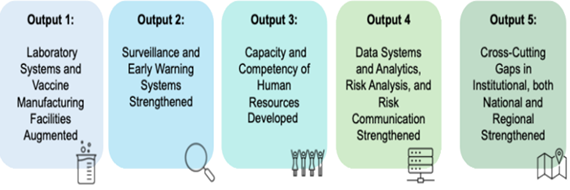TAG: GS- 3 ECOLOGY AND ENVIRONMENT
CONTEXT: The Union Minister for Fisheries, Animal Husbandry and Dairying recently launched the ‘Strengthening Animal Health Security in India for Pandemic Preparedness and Response’ initiative in New Delhi.
EXPLANATION:
What is zoonotic disease?
- Zoonosis or zoonotic diseases are infectious diseases that spread from animals to humans. Bacteria, viruses, parasites, or other agents may cause them. Zoonotic diseases can range from minor illnesses to life-threatening conditions.
Some examples of zoonotic diseases:
- Rabies, influenza, salmonellosis, Lyme disease, Ebola, anthrax, Nipah, COVID-19, brucellosis, and tuberculosis.
More on the News
- The Project enhances departmental efforts in disease surveillance including genomic and environmental for early warning, lab infrastructure, and cross-border collaboration to improve “zoonotic disease” monitoring and management.
- It is aims to strengthen India’s capacity to prevent, detect, and respond to animal health threats, reducing zoonotic disease risks through enhanced surveillance, laboratory systems, and regional collaboration.
Two important documents aimed at strengthening animal health management in India were also released:
- Standard Veterinary Treatment Guidelines (SVTG): A comprehensive document outlining best practices for veterinary care aimed at improving livestock’s overall health and productivity and supporting the national action plan for Anti-microbial resistance.
- Crisis Management Plan (CMP) for Animal Diseases: A critical resource that will provide a framework for managing and responding to outbreaks of animal diseases, ensuring rapid containment and mitigation.
About the Pandemic Fund Project:
- The Project, funded by the G20 Pandemic Fund, focuses on enhancing disease surveillance through genomic and environmental monitoring for early warning systems and improving laboratory infrastructure.
- Established under Indonesia’s G20 Presidency, the G20 Pandemic Fund finances critical investments to strengthen pandemic prevention, preparedness, and response capacities at national, regional, and global levels, focusing on low- and middle-income countries.
- The project will be implemented in partnership with the Asian Development Bank (ADB), the Food and Agriculture Organization (FAO) and the World Bank.
- The project is designed to enhance India’s animal health security, thereby fortifying the country’s defences against future pandemics through the following five key outputs:

Why is this project importance for India?
- India has the largest livestock population (536 million) in the world (including cattle, buffalo, sheep, goats and pigs) and the second largest poultry market in the world.
- Second largest producer of fish and also second largest aquaculture nation in the world.
- The livestock provides food items such as Milk, Meat and Eggs for human consumption. India is number one milk producer in the world.
Government Initiatives:
- National Animal Disease Control Programme (NADCP): It was launched in 2019 to control foot and mouth disease and brucellosis by vaccinating 100% of cattle, buffalo, sheep, goat and pig population.
- National Centre for Disease Control (NCDC): It plays a vital role in disease surveillance and response, including zoonotic diseases, in India.
Source:
https://indianexpress.com/article/explained/explained-economics/animal-health-fund-project-9658585/
Spread the Word
